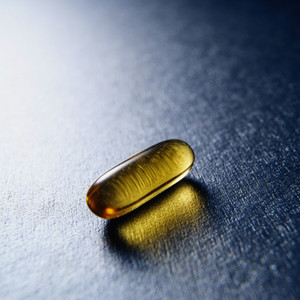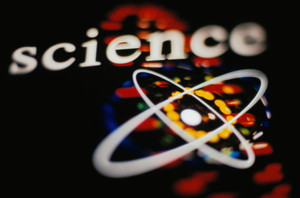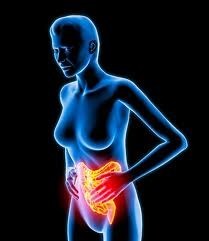Period: January to August 2012
Biosimilars or ‘biosimilar medicinal products’ are medicinal products that are similar (but not identical) in terms of quality, safety and efficacy to an authorised biological reference medicine. Manufacturing of biologicals is complex, and the quality of the resulting biological is dependent on careful control of manufacturing processes and conditions. Unlike traditional small molecule (chemical) drugs, the development of biologicals is different and variable with respect to the manufacturing process and environmental factors, such as light and temperature. The complexity and heterogeneity of the molecular structure, complicated manufacturing processes, different analytical methods and possibility of immunogenicity reactions make quantitative evaluation of biosimilars a challenge to both the scientific community and regulatory agencies.
This article discusses some of the research papers on biosimilars that have been published during the period of January to August 2012, highlighting what the important subjects are in the field of biosimilars. Topics investigated by researchers included safety and immunogenicity.
Safety
The approval of biosimilars by EMA in the past years has prompted discussion on potential safety risks associated with switching to and from these products. It has been suggested that switching may lead to safety concerns, however, scientific research published in the first three quarters of 2012 indicates otherwise.
The safety data of three EMA approved biosimilar recombinant human erythropoietins [Binocrit (epoetin alfa; Hexal), Retacrit (epoetin zeta; Hospira) and Eporatio (epoetin theta; Ratiopharm)] was reviewed [1]. Safety concerns with erythropoietins in general include immunogenicity, venous thromboembolism and mortality. The authors therefore used EMA dossiers and journal publications, to review the available safety data, with emphasis on serious/severe adverse events and a special consideration for immunogenicity, venous thromboembolism, and mortality. The results showed that all three biosimilars have similar safety profiles, with no single product being more or less safe.
Safety data related to switching between human recombinant growth hormones, erythropoietins and granulocyte colony-stimulating agents was also reviewed [2]. The paper used data from clinical trials, pharmacovigilance databases, as well as an overview of the literature and covered both switching between originator products within the same product class and switching to and from biosimilars. Data is limited on the clinical effects of switching, however, no evidence was found from either clinical trial data or post-marketing surveillance data that switching to and from different biologicals leads to safety concerns. Erythropoietins are the product class with the most data on switching.
Immunogenicity
Most biologicals induce immune responses (immunogenicity), in most cases these effects are harmless, but in some cases they can induce immune response and adverse reaction, such as in the case of pure red cell aplasia (PRCA) [3].
In a study carried out by Barbosa et al. key steps for the development of biosimilars and biobetters were reviewed and strategies for developing less-immunogenic biologicals were proposed. Using interferon-β (IFN-β) as a case study, the correlation between aggregation and immunogenicity was explored and the feasibility of developing an IFN-β with lower aggregation and/or immunogenicity was discussed [4].
In another paper by Jelkmann et al. experiences with EU-approved biosimilar epoetins are summarised, with respect to the issue of immunogenicity, especially considering that neutralizing anti-epoetin antibodies can cause PRCA [5]. The authors give their opinion that the term ‘biosimilar’ should only be used for ‘similar’ biologicals approved under a defined regulatory pathway. Their paper also shows that the introduction of biosimilars onto the market has stimulated innovator companies to develop second-generation products with improved pharmacokinetic properties.
The various research mentioned here highlights the areas where there is still more to be done in biosimilars. Safety is always of paramount importance and the current research shows that biosimilars that are currently approved under the defined regulatory pathway can safely be used as a cost-saving alternative to originator products, thus providing much needed access to life-saving medicines.
Editor’s comment
Interestingly, Ratiopharm’s Eporatio (epoetin theta) was not approved as a biosimilar but as an originator product by EMA [6], despite it being described as such in the paper by Abraham et al. In fact Eporatio, although initially submitted to EMA as a ‘similar biological medicinal product’ (according to Article 10 (4), Directive 2001/83/EC), was authorised in Europe via a ‘complete and independent application’, according to the European Public Assessment Report.
Related article
Overview ofresearch on biosimilarity/comparability and interchangeability of biosimilars 2012
Naming and interchangeability of biosimilars raised in new survey
References
1. Abraham I, Macdonald K. Clinical safety of biosimilar recombinant human erythropoietins. Expert Opin Drug Saf. 2012 Sep;11(5):819-40.
2. Ebbers HC, Muenzberg M, Schellekens H. The safety of switching between therapeutic proteins. Expert Opin Biol Ther. 2012 Jul 31. [Epub ahead of print].
3. GaBI Online - Generics and Biosimilars Initiative. Epoetin alfa and pure red cell aplasia [www.gabionline.net]. Mol, Belgium: Pro Pharma Communications International; [cited 2012 Oct 5]. Available from: www.gabionline.net/Biosimilars/Research/Epoetin-alfa-and-pure-red-cell-aplasia
4. Barbosa MD, Kumar S, Loughrey H, Singh SK. Biosimilars and biobetters as tools for understanding and mitigating the immunogenicity of biotherapeutics. Drug Discov Today. 2012 Jul 13. [Epub ahead of print].
5. Jelkmann W. Biosimilar recombinant human erythropoietins ("epoetins") and future erythropoiesis-stimulating treatments. Expert Opin Biol Ther. 2012;12(5):581-92.
6. GaBI Online - Generics and Biosimilars Initiative. EMA proposes more precise definition for biosimilars [www.gabionline.net]. Mol, Belgium: Pro Pharma Communications International; [cited 2012 Oct 12]. Available from: www.gabionline.net/Biosimilars/Research/EMA-proposes-more-precise-definition-for-biosimilars
Permission granted to reproduce for personal and educational use only. All other reproduction, copy or reprinting of all or part of any ‘Content’ found on this website is strictly prohibited without the prior consent of the publisher. Contact the publisher to obtain permission before redistributing.








 0
0











Post your comment